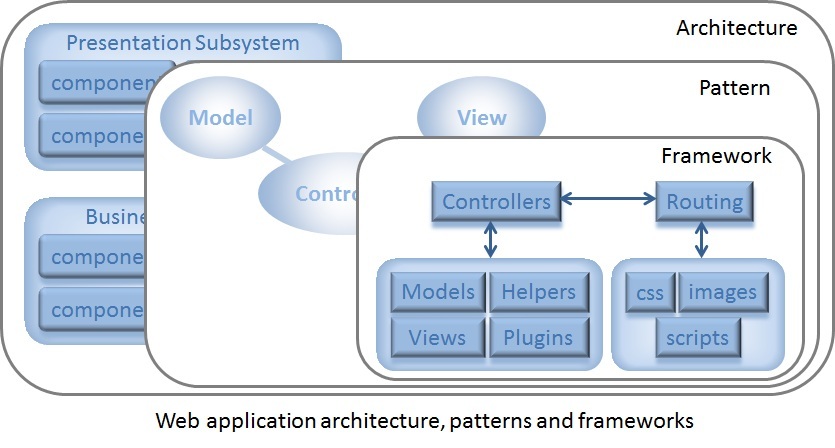This site is the archived OWASP Foundation Wiki and is no longer accepting Account Requests.
To view the new OWASP Foundation website, please visit https://owasp.org
PHP Security for Architects
Introduction
Application security isn't just a feature or an add-on. Security is directly linked to how an application has been coded: bad designed applications have bad security. Good software architecture and design is therefore the foundation for secure code. Security also depends on how it's been incorporated in the software development life cycle and software maintenance processes. Summarized: architecture, design and process are the 3 pillars for secure code:
Architecture
- Don’t glue your application together with code snippets from the Internet
- Structure & Organize your code by using an architectural pattern and/or application framework
Design
- Don’t re-invent the wheel
- Follow proven software design principles to avoid common pitfalls
Process
- The proof of the pudding is in the testing, before and after going live.
- Maintain and improve your code till the end of its life by continuous bug fixing, patching, refactoring, etc.
Architecture, patterns and frameworks
Good software architecture and design is the foundation for secure code as it helps to structure and organize your code. Why ? Because structuring and organizing your code reduces unnecessary complexity, therefore it's less error prone, easier to debug, to maintain and to change. Architectural patterns help you to accomplish this by providing coding rules and guidelines while frameworks enforce architecture and code structure. Before getting into detail about architecture and security, first a short explanation about architecture, patterns, frameworks and the relationship between them:
Architecture
First of all a definition of software architecture. There are many to find on the Internet but the most applicable one for web applications is: "Software architecture is the description of the subsystems and components of an application and the relationships between them". From the perspective of programming, components can be seen here as modules, classes, objects or even procedural functions. While a subsystem is a set of components which work together to accomplish a specific task.
Patterns
Patterns are standard architectures, they are the product of the experience of many developers and are proven solutions which promote good design practices. Patterns describe a set of predefined subsystems, their responsibilities, and rules and guidelines for organizing the relationships between them. The Model-View-Controller (MVC) pattern is the most common used one for PHP web applications and PHP frameworks.
Frameworks
Frameworks can be seen as prefab code, they make it easy for developers to rapidly build web applications with ready to use components and libraries. (Good) frameworks are based on a proven software architecture and feature built-in best practices for software design. Current most popular PHP frameworks are all MVC based. Though frameworks allow developers less freedom, applications build without using a framework, depend entirely on the developer's own interpretation of good architecture and design.
Design considerations
PHP frameworks can speed up development with well organized, reusable and maintainable code while they have also many built-in security features. Nevertheless, you can still find many poorly secured PHP web applications on the Internet which have been build by using a framework. Most of the security issues with these web applications are caused by misconfiguration and client code written on top of frameworks. This is the downside to frameworks, developers may become too dependent upon them, so they no longer understand how the code exactly works "under the hood". There is even a new generation of web application developers who don’t know how to code anymore as they are no longer a PHP developer but a "framework XYZ" developer. Learning to code PHP from scratch is therefore not only a good exercise to learn and understand MVC and good design practices, it's also essential to get a real understanding of secure coding.
Design Principles
Good software architecture and design are the foundation for secure code, but what is good software design? From security perspective, the most important element of good software design is that your code should be simple, well structured, modular and easy to maintain. This is something known as code quality, clean code or "good" code. Good code depends on developer skills but also results from following proven design principles such as:
- KISS: Keep it simple and avoid unnecessary complexity - Complexity is a potential source of security bugs
- DRY: Avoid unnecessary repetition, implement functionality by a single piece of code - Vulnerabilities may continue to exist in overlooked duplicated code
- YAGNI: Don't waiste effort on features you don't need - Reduce attack surface by leaving out unnecessary features
- COCO: Follow Coding Conventions to ensure efficiency and consistency - Confusing and unmaintainable code contributes to errors and security issues
These principles are the foundation for secure code, security by design principles are the next step to secure code.
Architectural considerations
Middle tier
Web Services Middle tier
Middle tier
Noteworthy Frameworks
Zend Framework
PEAR
OWASP Filters
CakePHP
This article is a stub. You can help OWASP by expanding it or discussing it on its Talk page.
